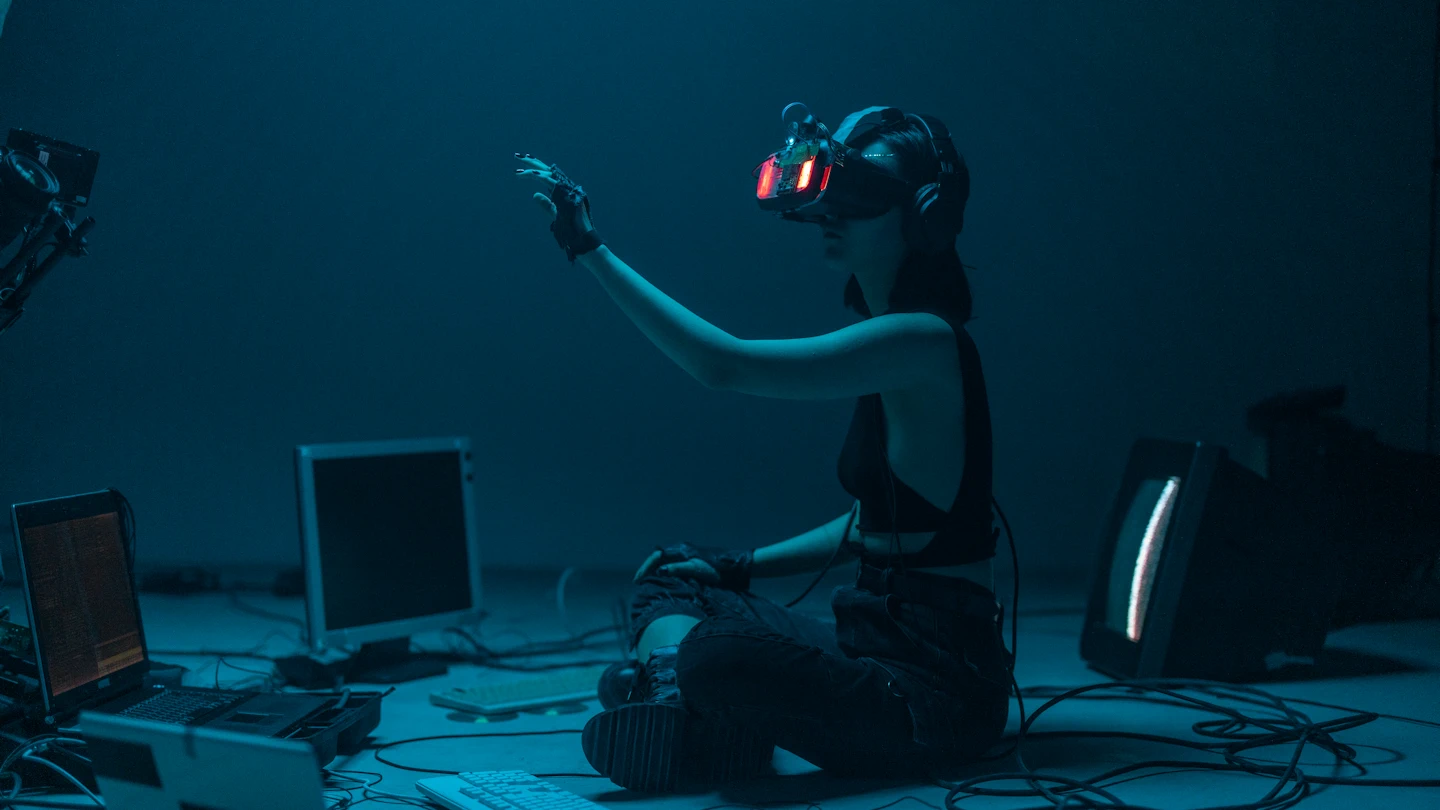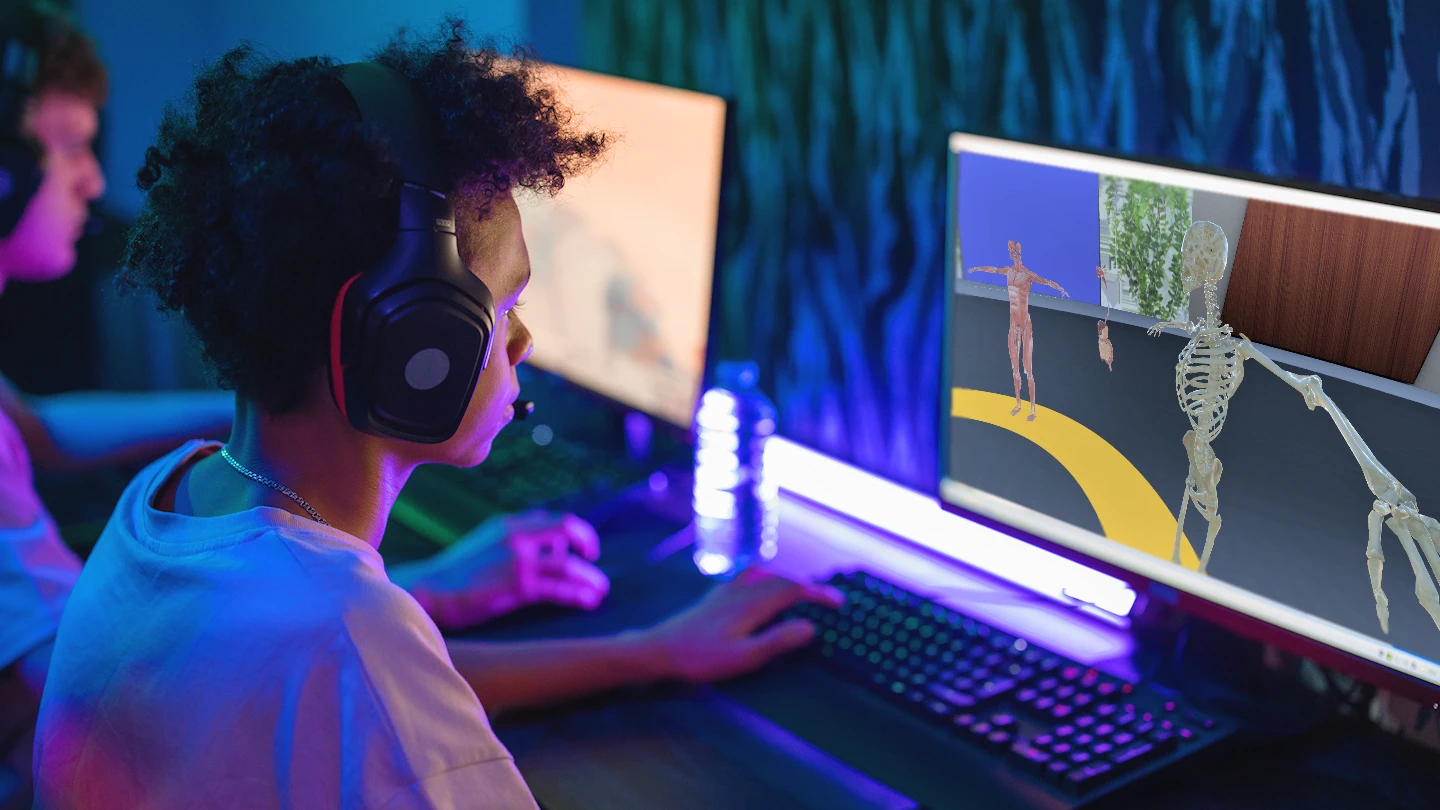Virtual reality (VR) and augmented reality (AR) are two emerging technologies that have the potential to revolutionize education. VR creates a simulated environment where users can interact, while AR overlays digital information onto the real world.
Educators use these technologies in various ways, from providing students with immersive learning experiences to helping them visualize complex concepts.
This article will explore the benefits of VR and AR in education and their potential for the future.
Can you imagine taking a virtual field trip to the surface of Mars? With VR, you can conduct scientific experiments in dangerous environments without putting yourself at risk. With VR and AR, these experiences are now possible.
What are VR and AR?
- Virtual reality (VR): VR headsets create the illusion that the user is actually inside the simulated environment by using a computer-generated simulation that makes a realistic and immersive experience.
- Augmented reality (AR): Users can use AR headsets or smartphones with AR apps to see digital objects superimposed on the physical environment.
How are VR and AR currently being used in education?
Educators are currently using VR and AR in education in a variety of ways, including:
- Science and engineering: VR and AR can simulate experiments and allow students to visualize complex concepts.
- History and geography: VR and AR can take students on virtual field trips and explore historical sites.
- Language learning: VR and AR can create immersive language learning experiences.
- Medical education: Educators can use VR and AR to train medical students in various procedures.
- Business training: VR and AR can train employees in various skills.
- Astronomy: VR games like Celestial Journey Alter Learning can be used to teach students about astronomy and the solar system.
Benefits of VR and AR in education
The benefits of using VR and AR in education include:
- Immersive learning experiences: VR and AR can provide students with immersive learning experiences that can be difficult or impossible to replicate in the real world.
- Improved understanding of complex concepts: VR and AR can help students better understand difficult concepts by providing visual representation.
- Increased engagement and motivation: VR and AR can make learning more engaging and motivating for students.
- Personalized learning: VR and AR to personalize learning by providing students with content tailored to their needs.
- Collaborative learning: Students can collaborate on learning projects using VR and AR technology.
- Reduced anxiety and stress: VR and AR technology can reduce anxiety and stress in students.
- Improved spatial awareness: VR and AR can help students to improve their spatial awareness.
- Increased creativity: VR and AR can help students to be more creative.
Celestial Journey VR – Alter Learning
Celestial Journey is a VR game that allows students to explore the solar system and learn about astronomy. The game uses realistic graphics and sound effects to create an immersive learning experience. Students can learn about the solar system’s planets, moons, and stars and the laws of physics that govern their motion. The game also includes interactive activities that allow students to test their knowledge and understanding of astronomy.
Students in grades 5-8 can play this game, but learners of all ages can. It is available for the Oculus Quest 2 and the HTC Vive.
Here are some of the features of Celestial Journey – Alter Learning:
- Realistic graphics and sound effects create an immersive learning experience.
- Interactive activities that allow students to test their knowledge and understanding of astronomy.
- You can explore a variety of planets, moons, and stars.
- The storyline of the game helps students learn about astronomy.
- A leaderboard that allows students to compete with each other.
Celestial Journey VR – Alter Learning is an excellent way for students to learn about astronomy in a fun and engaging way. It is a valuable tool for teachers looking for new and innovative ways to teach their students about the universe.
The future of VR and AR in education
The future of VR and AR in education is bright, and these technologies have the potential to revolutionize the way we learn about the universe. For example, VR games like Celestial Journey VR – Alter Learning can be used to teach students about astronomy and the solar system. These games use realistic graphics and sound effects to create an immersive learning experience and can help students better understand complex concepts about the universe.
As VR and AR technology continue to develop, we expect to see even more innovative and effective ways to use these technologies in the classroom.
Some of the potential future applications of VR and AR in education include:
- Virtual field trips: VR can take students on virtual field trips to historical sites, natural wonders, and even other planets.
- Remote learning: VR and AR can provide students with a more immersive and interactive learning experience, which can be especially beneficial for students who cannot attend school in person.
- Medical education: VR and AR technology can provide medical students with hands-on training in various procedures, which could help reduce the risk of mistakes and improve patient outcomes.
- Military training: VR and AR can help soldiers improve their readiness for deployment by providing realistic training that simulates the real-world environment.
- Business training: VR and AR can improve employees’ productivity and efficiency by helping them learn new skills and practice existing ones in a safe and controlled environment.
How VR and AR can revolutionize the way we learn about the universe
VR and AR can potentially revolutionize how we know about the universe. For example, VR can take students on virtual field trips to space, allowing them to explore planets, stars, and galaxies up close. AR can be used to overlay digital information onto the real world, allowing students to see the universe in a new way.
Here are some specific examples of how VR and AR to learn about the universe:
- Explore the solar system: VR can take students on a virtual solar system tour. Students can explore the planets, moons, and asteroids up close.
- Study stars and galaxies: VR can create realistic simulations of stars and galaxies. Students can learn about the formation and evolution of these celestial objects.
- Observe astronomical events: VR can be used to watch astronomical events like solar eclipses and supernovas. Students can experience these events as if they were happening right before them.
- Conduct astronomical research: VR can be used to conduct astronomical research. For example, students can use VR to simulate experiments or explore data sets.
VR and AR are still emerging technologies, but they have the potential to revolutionize the way we learn about the universe. As the technology continues to develop, we can expect to see even more innovative and exciting ways to use VR and AR to learn about the cosmos.
Conclusion
VR and AR are two powerful technologies that have the potential to revolutionize education. They can make learning more immersive, engaging, and effective. As the technology continues to develop, we can expect to see even more innovative and effective ways to use VR and AR in the classroom. The future of VR and AR in education is bright, and these technologies can change how we learn about the universe.
Frequently Asked Questions
What is VR?
Virtual reality (VR) is a computer-generated simulation that creates a realistic and immersive experience. VR headsets create the illusion that the user is actually inside the simulated environment.
What is AR?
Users can see digital objects superimposed on the physical environment using AR headsets or smartphones with AR apps.
How are VR and AR currently being used in education?
Students are learning with VR and AR in a variety of ways, such as:
– Science and engineering: VR and AR can simulate experiments and allow students to visualize complex concepts.
– History and geography: VR and AR can take students on virtual field trips and explore historical sites.
– Language learning: VR and AR can create immersive language learning experiences.
– Medical education: VR and AR can provide medical students hands-on training in various procedures.
– Business training: VR and AR can train employees in various skills.
What are some benefits of using VR and AR in education?
The benefits of using VR and AR in education include:
– Immersive technologies such as VR and AR offer students unique learning experiences that are hard to replicate in the physical world.
– These technologies aid in comprehending complex concepts by offering visual representations.
– By enhancing engagement, immersive technologies like VR and AR can make learning a more stimulating experience.
– Tailored content delivered through VR and AR personalizes learning to individual student needs.
– Within virtual environments, students can collaborate on projects, fostering teamwork through immersive tech.
– The integration of VR and AR can contribute to a reduction in student anxiety and stress.
– Through spatial exercises, VR and AR can enhance students’ spatial awareness.
Embracing VR and AR can also nurture students’ creativity.
How is VR and AR likely to evolve in the coming years?
VR and AR are still emerging technologies, but they are rapidly evolving. As the technology continues to develop, we can expect to see even more innovative and effective ways to use VR and AR in education.
Some of the potential future dvelopments of VR and AR in education include:
– VR and AR headsets are advancing, immersing students in lifelike learning.
– These headsets are getting cheaper and easier to access, benefiting more students.
– Teachers are integrating VR and AR to enhance learning methods.
– Personalized learning thrives through VR and AR’s adaptable content.
– Collaborative learning grows as students engage in shared virtual environments.
– VR and AR make learning captivating and motivating for students.



